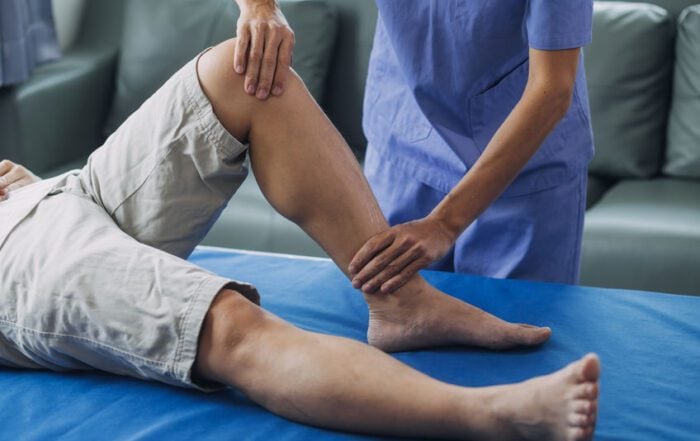Recovery After Bone Realignment
An osteotomy is a general type of surgery designed to realign or reshape a person’s bones. However, the procedure can be performed almost anywhere in the body, with common areas including elbows, knees, shoulders, hips, the spine, and even the jaw or toes. Typically, the surgery calls for bones to be cut to better position a joint. However, depending on which bones are being treated, the surgical method performed may vary. Regardless of the process, most people will be fitted with a cast to aid in setting the affected joint and aiding recovery.

Time for a cast?
Since osteotomy procedures can vary widely, recovery can look slightly different depending on how a person’s surgery was managed. Some people may need a cast, splint, or even crutches for several weeks or months after the procedure. However, some versions of the surgery may not require a cast at all. For example, people undergoing a chin osteotomy may instead be required to wear an elastic bandage or compression garments. Unlike casts, bandages and compression materials can typically be removed a few days after surgery.
Speeding up recovery
Healing after an osteotomy is a 2-part process. The initial focus is on simply recovering. During the immediate period after the surgery, patients are encouraged to get plenty of rest and to manage pain with any recommended over-the-counter (OTC) or prescribed medications. Most importantly, depending on the surgical site, patients are urged to avoid bearing weight on the treated joint until given approval by a physician.
Don’t forget physical therapy
Another key component for successfully recovering from most osteotomy procedures is physical therapy (PT) attendance. A physical therapist can work with individuals to provide guided exercises to improve weight bearing in the affected joint and improve proper posture or range of motion (ROM) to avoid further injury. Likewise, regularly performing therapy can ensure people regain full function in the joint. As a result, patients that complete a PT regimen can expect to return to normal activities anywhere from 3-6 months after an osteotomy.
Be patient during recovery
Since osteotomies are intended to realign a joint to improve stability and ROM, people should be prepared for slightly longer recovery times. While waiting to heal fully can be frustrating, being patient and following a surgeon or physician’s orders is critical to ensure the joint is fully functional once the recovery timeline is complete. If needed, casting times can range from weeks to months. The surgeon should be able to offer a more precise timeline depending on the exact type of surgery performed and the patient’s commitment to recovery.
Recent Posts
What To Do About Hip Pain: Is It Time To See An Orthopedic Surgeon About Labral Repair?
Hip pain should not be overlooked, as the issue could be a labral tear. Symptoms like pain and instability require an orthopedic surgeon’s assessment.
ACL Repair: Will You Have Range Of Motion With Your Knee After Recovery & Physical Therapy?
After an ACL injury, ROM can be negatively affected. ACL repair surgery helps restore function, but physical therapy is essential to ROM.
Arthroscopy: What Are The Benefits Of This Minimally Invasive Outpatient Orthopedic Procedure?
Arthroscopy can help diagnose or treat joint conditions. Benefits of the MIS include faster recovery, less pain, and fewer scars.
Posterior Interbody Lumbar Fusion: What Are The Benefits Of PLIF For People With Back Pain?
People with chronic back pain may benefit from posterior interbody lumbar fusion surgery. PLIF can reduce pain and improve stability.








